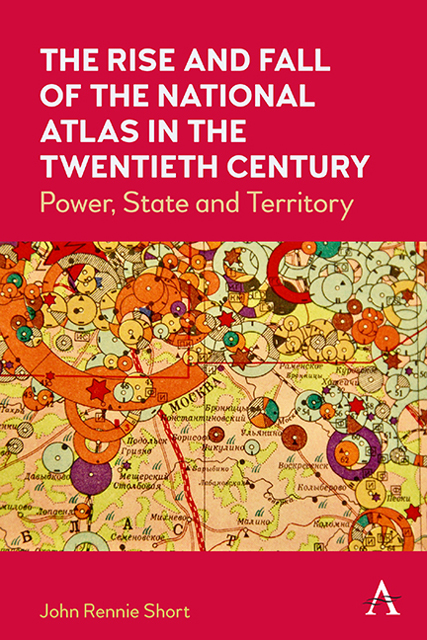Book contents
- Frontmatter
- Contents
- List of Figures
- List of Tables
- Acknowledgments
- 1 Introduction
- 2 The Early National Atlas
- 3 Cartographic Anxieties and the Emergence of the Modern National Atlas
- 4 Cartographic Ruptures and the National Atlas
- 5 National Atlas, Global Discourses
- 6 The Physical World of the National Atlas
- 7 The Social World of the National Atlas
- 8 The End of the National Atlas?
- Notes
- Appendix: National Atlas Bibliography
- Index
2 - The Early National Atlas
Published online by Cambridge University Press: 09 December 2022
- Frontmatter
- Contents
- List of Figures
- List of Tables
- Acknowledgments
- 1 Introduction
- 2 The Early National Atlas
- 3 Cartographic Anxieties and the Emergence of the Modern National Atlas
- 4 Cartographic Ruptures and the National Atlas
- 5 National Atlas, Global Discourses
- 6 The Physical World of the National Atlas
- 7 The Social World of the National Atlas
- 8 The End of the National Atlas?
- Notes
- Appendix: National Atlas Bibliography
- Index
Summary
The national atlas emerged with the rise of the nation-state in the sixteenth century. It was primarily a tool of surveillance connected to the need for a more spatially informed statecraft. Sometimes printed, more often in manuscript form, its circulation was limited. It was used to inform the military, economic and political elites. I will explore the case of France and particularly of England.
A Cartographic Explosion
There was a cartographic revolution in Europe in the sixteenth century. In 1500, maps were almost unknown and little understood; by 1600, they were familiar objects and vital parts of national life as a widespread cartographic literacy emerged. The culmination of this cartographic revolution was an incredible burst of cartographic innovation in the last third of the sixteenth century. In a relatively short period, the first modern atlas (1570), the first urban atlas (1572) and the first national atlas (1579) were all produced in Europe. Within the space of less than 10 years, the standard representations of the world that we still make use of today were first developed.
In 1570, Abraham Ortelius (1527–1598) published one of the world's first atlases, the Theatrum Orbis Terrarum. At that time, most maps—especially the larger maps—were single sheets kept rolled up and unrolled every time they were used. There had been a collection of maps brought together in one volume before Ortelius, but he was to set a standard by which subsequent collections would be judged and compared. Ortelius was not only concerned with providing maps in the handier book form, but he also wanted the very best maps. He sought out the most accurate current maps and collected maps from a wide range of cartographers. He listed all the names of the cartogra-phers whose work he had used: 87 names were mentioned for the first edition in 1570, 170 by 1595 and 182 in the 1603 edition.
These world atlases were part of early modern Europe's attempt to describe and picture a new world opening up to market penetration and imperil designs. European global territorial appropriation was matched by a visually rich epistemic project to represent, classify and cohere this new world. The Dutch, and especially Dutch atlas makers, played an important role in this endeavor to not only describe but also to appropriate this world.
- Type
- Chapter
- Information
- The Rise and Fall of the National Atlas in the Twentieth CenturyPower, State and Territory, pp. 11 - 16Publisher: Anthem PressPrint publication year: 2022

